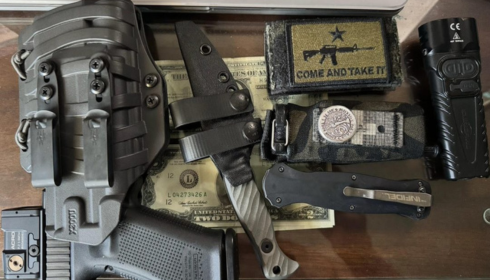Table of Contents
- Why Concealed Carry Matters For Personal Safety
- Finding the Right Gear for Daily Use
- Key Features To Look For In Concealed Carry Clothing
- The Role of Jackets In Practical Concealment
- Balancing Comfort and Accessibility
- Legal and Safety Best Practices
Why Concealed Carry Matters For Personal Safety
Concealed carry is gaining popularity in the US, with 32% of American adults owning a firearm. Carrying a concealed weapon is not just about feeling secure, but also about being prepared for the unexpected. The decision to carry involves choosing the right equipment, such as holsters and clothing, which significantly improves safety and practicality. For example, a concealment jacket allows individuals to carry discreetly, maintaining low visibility while ensuring quick access when seconds matter—carrying concealed means not only feeling secure but also making an intentional commitment to being ready for the unexpected. The right gear becomes an extension of yourself, fitting seamlessly into daily routines instead of feeling like an extra burden.
Finding the Right Gear for Daily Use
Concealed carry gear selection is a personal process influenced by individual needs, body types, and daily routines. Reflecting on your typical day, such as commuting hours, physical activity, and clothing preferences, can help identify compatible products. Many first-time carriers begin with basic holsters and regular clothing. Still, as their experience increases, they transition to purpose-built options, such as shirts, jackets, or vests with integrated holsters. Choosing gear that works with your preferred draw hand and testing methods in the mirror can provide deeper insights into your needs. Refining your carry system will lead to increased discretion and confidence in your daily routine.
Key Features To Look For In Concealed Carry Clothing
Concealed carry clothing is a combination of functionality, comfort, and safety. It features strategically placed pockets and holsters, reinforced stitching, and moisture-wicking linings for all-day comfort. Secure closures, such as zippers or snap systems, provide peace of mind. Strategic pocket placement is crucial for comfort and draw speed. Some designs offer ambidextrous pocket placement, suitable for both left-handed and right-handed users. Flexible fabrics allow for unrestricted motion during daily activities. Investing in well-designed carry apparel goes beyond aesthetics; it’s a critical safety measure. Choosing the right clothing is not just about aesthetics; it’s about safety.
The Role of Jackets In Practical Concealment
Outerwear, particularly jackets for concealed carry, is a popular choice for seasoned carriers due to its versatility. These jackets provide substantial coverage, reducing the risk of accidental exposure and maintaining a low firearm profile. When paired with holsters or integrated pockets, they ensure firearms are always within reach but not in plain view. They are practical in urban settings, providing extra storage for essentials like ID, keys, or travel documents. Adjustable options, such as cuffs or waistband cinches, ensure the jacket complements a variety of outfits. These jackets are particularly useful for active commuters who need to transition from work to errands without having to change their setup throughout the day.
Balancing Comfort and Accessibility
Consistency is crucial in concealed carry, as it ensures the gear remains unobtrusive and easy to wear. Breathable clothing or jackets offer relief on longer days, while adjustable designs accommodate various body shapes and changing clothing layers. Accessibility should not be sacrificed for concealment or comfort. Test your gear by practicing draw motions from multiple positions, and troubleshoot in advance to gain valuable muscle memory for the real world. Choose carry options that allow for high concealment and instant accessibility, as hesitation can make all the difference.
Legal and Safety Best Practices
Gun owners must be aware of the changing rules for concealed carry, which can vary from state to state and even within cities. Regularly checking local and state regulations is crucial, as ignorance can lead to severe legal consequences. Government or law enforcement websites provide accurate information. Safety is also vital, as using holsters and apparel specifically designed for firearms is essential. Regular training at ranges or local classes can help maintain accuracy and emergency response tactics. Continuous learning through training or refresher courses is necessary for maintaining safety, responsibility, and effectiveness.

